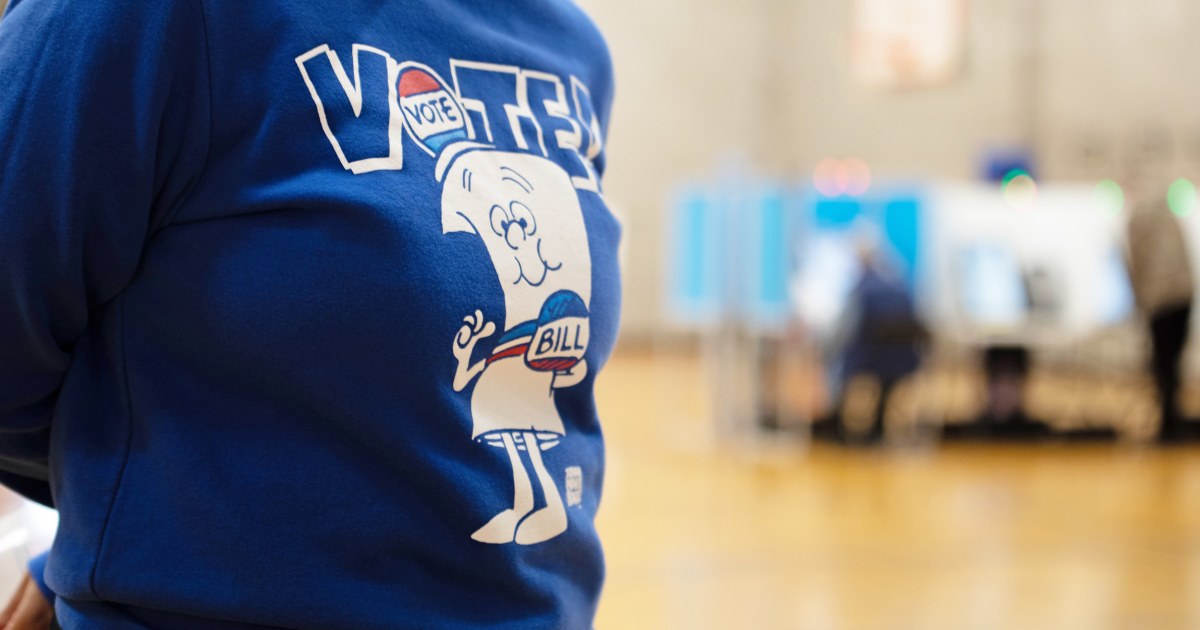Young Latino voters were a crucial voting bloc in slowing down the so-called Republican red wave in the 2022 midterm elections, according to early exit polls.
While Americans are still waiting to learn which political party will control the House and the Senate next year, initial data is showing that younger Latino voters, despite party identification, are boosting Democrats amid highly contested races.
The NBC News Exit Poll found that 68% of Latino voters under 30 voted for a Democratic House candidate on Election Day, even though only 43% of them identify as a Democrat. Thirty percent of young Latino voters favored the Republican House candidate.
When it comes to party identification, 37% of young Latino voters identify as independent and 20% identify as Republican, according to NBC News exit polls. Additionally, 41% of young Latino voters identify as liberal, while 34% identify as moderate and 25% as conservative.
The NBC News Exit Poll also echoed some analysis from CIRCLE, the Center for Information and Research on Civic Learning and Engagement at Tufts University, which studies young voters.
Young Latino voters under 30, alongside young Black voters, showed stronger support for Democrats on Election Day compared to young white voters, according to the analysis by CIRCLE. Sixty-eight percent of Latino youth and 89% of Black youth voted for a Democratic House candidate. Among white young voters, the vote was 58% for Democrats.
“In close races, the big margins from young people, from youth of color, from young Latinos, can be really influential. Sometimes they can even be decisive,” Alberto Medina, CIRCLE’s communications lead, told NBC News. “They can really either put a candidate over the top or keep them in the race.”
For instance, Senate races in Western states such as Nevada and Arizona, where young Latinos make up 40% of all newly eligible voters in the region, were ranked by CIRCLE as races where young voters could have the biggest impact.
“The ranking for those two states is really heavily influenced by the big presence of young Latino voters,” Medina said.
Democratic Sen. Catherine Cortez Masto of Nevada, the first Latina elected to the U.S. Senate, is running for re-election in a hotly contested race against Republican Adam Laxalt. Votes are still being tallied, but 64% of young voters sided with Cortez Masto as of Wednesday, according to CIRCLE.
In Arizona as of Wednesday, 76% of young voters favored Democratic Sen. Mark Kelly in his race against Republican Blake Masters. That race is still too early to call as of Friday afternoon, according to NBC News.
Since Latinos are among the youngest racial and ethnic groups in the country with a median age of 30, it’s almost impossible to understand Latino voters without recognizing their connection to the nation’s youth vote.
‘Voters want to see things done’
CIRCLE estimated that 27% of people ages 18 to 29 voted in the midterm election, making it the second-highest youth voter turnout in almost three decades.
Dakota Hall, executive director of Alliance for Youth Action, thinks that young voters are engaging with Democratic candidates to push them further on policy platforms related to abortion access, climate change and the economy — especially on raising wages, creating economically sustainable futures and investing in education.
“We’re so polarized in this country, that young people understand that on key social issues, the Republicans are not with them,” Hall told NBC News.
While some like Hall believe that Democrats’ messaging around key economic and social issues may have resonated with young Latino voters, others such as Clarissa Martinez De Castro, vice president of the Latino vote initiative at UnidosUS, think Democrats can’t get too comfortable if they want to harness this voting bloc.
“There’s value alignment, but if they want to capitalize on that, they’ve actually got to reach out effectively and early,” Martinez De Castro said. “Voters want to see things done. … Whether it is going to be on the economy and jobs, on immigration or abortion, on housing and health care, people want to see things done.”
Medina said CIRCLE’s research shows that young voters in general are less likely to commit to a party affiliation. Instead, these voters are motivated to vote based on their values and the issues they care about.

In nine electorally competitive states — Florida, Georgia, Michigan, North Carolina, New Hampshire, Nevada, Ohio, Pennsylvania and Wisconsin — the aggregate youth voter turnout was 31%, CIRCLE estimated.
Thirty percent of Latino voters are ages 18 to 29, which is “10 years younger than the national average,” Héctor Sánchez Barba, the executive director and CEO of Mi Familia Vota, said in a news briefing this week.
One million Latinos are expected to turn 18 every year at least for the next fifteen years, according to the Pew Research Center.
“Latinos are not only the present,” Sánchez Barba said. “They’re also the future of democracy.”
Follow NBC Latino on Facebook, Twitter and Instagram.
Share your story or advertise with us: Whatsapp: +2347068606071 Email: info@newspotng.com















